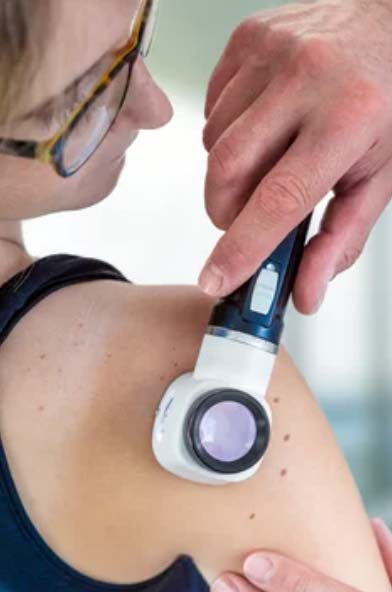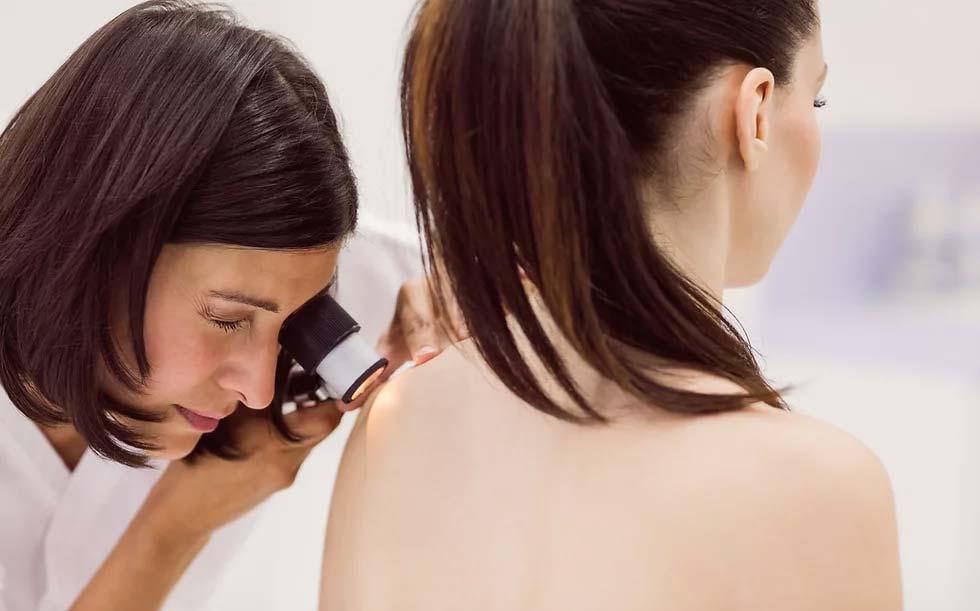Skin checks are a major and crucial part of maintaining good skin health.
Regularly inspecting skin can help you identify any changes or abnormalities early on, which can increase the chances of successful treatment—should there be a need.
When was your last skin check?
If you can’t remember, it’s probably too long.
With Australia having one of the highest skin cancer rates in the world, regular skin checks by a professional give you the best chance of early detection, a massive advantage when it comes to skin problems.
If it’s been a while since your last skin check, and/or you’ve noticed changes to moles, such as their shape, size, colour or texture, or new ones have appeared on your body, get in touch with our team today.
How do skin checks work?
One of the simplest ways to perform a skin check is to use the “ABCDE” method. This stands for:
A. Asymmetry: Look for moles or spots that are asymmetrical in shape.
B. Border: Check for moles or spots with irregular or poorly defined borders.
C. Colour: Look for moles or spots that have multiple colours or are uneven in colour.
D. Diameter: Check for moles or spots that are larger than the size of a pencil eraser.
E. Evolution: Look for moles or spots that have changed in size, shape, colour, or other characteristics over time.
If you notice any of these signs, it’s important to schedule an appointment with our team.
Our doctors use the latest in dermatology technology, which allows them to see, store and compare images of any moles or lesions at high resolution and magnification over time.
This allows experts at The Community Doctor to provide high-quality skin checks to support your ongoing health.
Whether you only have a few spots that you are concerned about, or you want to routinely plan a full-body skin check, we’re here to help.
Dr Roy Othman, our skin specialist, and his team have been supporting good skin health for many years, so call our clinic on (03) 7068 5808 to book your skin check today.
More on skin health in Australia
In addition to regular skin checks, it’s important to protect your skin from the harsh Aussie sun.
This can include wearing protective clothing, such as long-sleeved shirts and wide-brimmed hats, as well as using sunscreen with an SPF of at least 30.
Did you know? Ultraviolet (UV) radiation is responsible for more than 95% of all skin cancers.
UV radiation, which is the primary cause of skin cells becoming cancer cells, is not directly related to sunshine and heat, so it’s tough to detect.
When the UV is 3 or above, it is strong enough to damage your skin, and in Australia, that’s most days of the year.
It’s also a good idea to avoid tanning beds, as they are a known cause of skin cancer.
The general consensus on skin checks
It’s important to be mindful of any changes or abnormalities on your skin and to schedule regular appointments with skin professionals.
By taking these steps, you can increase your chances of detecting skin cancer early on, receiving effective treatment and enjoying healthy skin.


